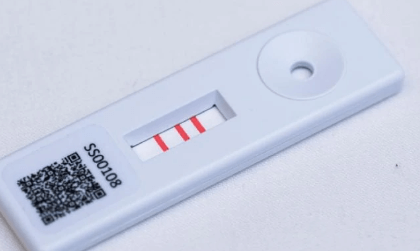What is the difference between lateral flow assay and flow-through assay?
1. Introduction
Diagnostics and research assays are crucial in detecting and analyzing various substances. Among the different types of assays available, lateral flow assays (LFA) and flow-through assays (FTA) are commonly used for their simplicity and quick results. While both share similarities, they also have distinct characteristics that make them suitable for specific applications. This article will explore the differences between lateral flow assay and flow-through assay to understand their unique features and uses.
2. Understanding Lateral Flow Assays (LFA)
2.1. Definition and Principle
Lateral flow dispenser assays, also known as lateral flow immunoassays, are diagnostic tests designed to detect the presence of a target analyte in a liquid sample without the need for specialized equipment. The assay operates on capillary action, where the sample flows along a porous strip via lateral movement. If the target analyte is present, it binds to specific antibodies immobilized on the strip, producing a visible signal (e.g., a colored line).
2.2. Applications
LFA finds widespread applications in various industries, including medical diagnostics, food safety testing, environmental monitoring, and veterinary medicine. They are commonly used for pregnancy testing, infectious disease detection (e.g., COVID-19 rapid tests), and drug-of-abuse screening.
2.3. Advantages
LFA offers several advantages, including rapid results (typically within minutes), ease of use, portability, and no requirement for specialized laboratory equipment. These features make LFA suitable for point-of-care testing and field applications.
2.4. Limitations
However, LFA has some limitations. They may have lower sensitivity and specificity compared to other immunoassays like ELISA. The visual interpretation of results could be subjective, leading to potential errors in readings.
3. Understanding Flow-Through Assays (FTA)
3.1. Definition and Principle
Flow-through assays, as the name suggests, involve the continuous flow of the sample through a solid phase where specific binding reactions occur. The sample is applied at one end, and the analytes of interest interact with immobilized ligands as they pass through the solid phase. The reaction results in the generation of a measurable signal.
3.2. Applications
Flow-through assays are commonly used in environmental monitoring, clinical diagnostics, and research applications. They are valuable for quantitative analysis and can be adapted for high-throughput screening.
3.3. Advantages
One of the significant advantages of FTA is its ability to provide quantitative results, allowing for more precise measurements. It also allows automation and integration into analytical systems, making it suitable for large-scale testing.
3.4. Limitations
Flow-through assays may require specialized equipment and may not be as rapid as lateral flow assays. The continuous flow may also require careful sample preparation to avoid clogging or interference.
4. Key Differences between Lateral Flow Assay and Flow-Through Assay
4.1. Sample Application
In LFA, the sample is applied at one end of the test strip and flows laterally through the membrane by capillary action. On the other hand, FTA involves the continuous flow of the sample through a solid phase where binding reactions occur.
4.2. Flow Mechanism
LFA operates based on capillary flow, driven by the wicking action along the strip. In contrast, FTA relies on a continuous flow process that requires external pumping or gravity.
4.3. Sensitivity
While both assays can detect target analytes, FTA generally offers higher sensitivity due to the controlled and uniform flow conditions.
4.4. Time Complexity
Lateral flow assays are known for their rapid results, typically providing qualitative outcomes within minutes. Flow-through assays may take longer, depending on the complexity of the reaction and the equipment used.
4.5. Cost
LFA is often more cost-effective since it requires minimal equipment and is disposable. In contrast, FTA may involve more significant upfront costs due to the need for specialized equipment.
5. Choosing the Right Assay for Specific Applications
The choice between LFA and FTA depends on the application’s specific requirements. LFA could be the preferred option if rapid qualitative results are needed and specialized equipment is limited. On the other hand, if quantitative measurements are essential and there is access to automation and sophisticated equipment, FTA might be the better choice.
6. Conclusion
In conclusion, both lateral and flow-through assays have advantages and limitations, making them suitable for different purposes. LFA is ideal for rapid, qualitative testing at the point of care. At the same time, FTA is better suited for quantitative analysis and high-throughput screening. Understanding the key differences between these two types of assays is crucial in selecting the most appropriate method for a particular diagnostic or research application.
7. FAQs
Q1. Are lateral flow assays reliable for medical diagnostics?
Lateral flow dispenserassays are widely used and reliable for certain medical diagnostics, such as pregnancy tests and infectious disease screening. However, their sensitivity and specificity may vary depending on the specific test.
Q2. Can flow-through assays be automated?
Yes, flow-through assays can be automated, which allows for high-throughput screening and precise quantitative measurements.
Q3. How do lateral flow assays work without external power?
Lateral flow assays rely on capillary action, which drives the flow of the sample along the strip without the need for external power.
Q4. Are lateral flow assays suitable for on-site environmental testing?
Yes, lateral flow assays can be adapted for on-site environmental testing due to their portability and ease of use.
Q5. Do flow-through assays require specialized training for operation?
Flow-through assays may require proper operation and maintenance training, especially when using complex analytical systems.
